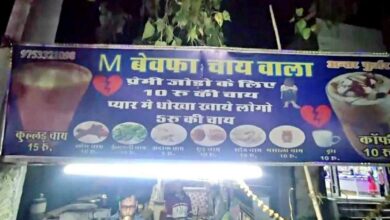Equal competition among states

The presidential election has proved that the BJP is still not far ahead of the Congress or other regional satraps in the states. There the competition is almost equal. But the contest in Parliament and especially in the Lok Sabha becomes one-sided. This is a big lesson for the next election. This also means that the Narendra Modi factor in state elections does not work the way it does in parliamentary elections. So, if the opposition has to take on the BJP and Narendra Modi in the next parliamentary elections, it will have to change its strategy. For this it is necessary that the opposition parties understand the pattern of voting differently in the assembly elections and the Lok Sabha elections. The presidential election has given this opportunity to the opposition. Another conclusion of this election result is that BJP has weakened in 2022 as compared to 2017. Of course, there is a difference of only one and a half percent votes but this difference has come. Draupadi Murmu got one and a half percent less votes than Ramnath Kovind and Yashwant Sinha got 1.5 percent more votes than Meira Kumar, despite the BJP being more resourceful and giving tribal and women candidates.
In the last election, Ram Nath Kovind got 65.65 per cent votes and Meira Kumar got 34.35 per cent votes. This time Draupadi Murmu got 64 percent and Yashwant Sinha got 36 percent votes. The strength of the BJP has increased in the Lok Sabha after the last Presidential election. It got more seats in 2019 than in 2014. Its ally Janata Dal-U had only two seats last time, this time it has 16 MPs in the Lok Sabha. Shiv Sena, despite being in opposition, voted as before. Despite this, if the BJP candidate got less votes than last time, it is because the situation has changed in the states. In the Lok Sabha, the BJP got a lot of votes but the votes of the Legislative Assemblies got reduced.
BJP is in government in most of the states of the country but the number of big states is very less in it. BJP has been able to win elections in very few big states. Among the big states, in North India it has won only in Uttar Pradesh and Bihar and in South India it has only Karnataka. He formed the government in Gujarat in the west and Maharashtra as it is now. In Madhya Pradesh too, he has formed his government by toppling the Congress government, but the number of its MLAs has decreased compared to the last time. In Uttar Pradesh too, the number of its MLAs decreased significantly. In the big states, Tamil Nadu, Andhra Pradesh, Telangana, Kerala, Rajasthan, Punjab, Chhattisgarh, Jharkhand, West Bengal etc. have the government of Congress or regional parties.
This is the reason why Yashwant Sinha’s vote margin was very small compared to the votes Draupadi Murmu got from the states. Draupadi Murmu got a total of 2,284 votes of MLAs, while Yashwant Sinha got 1,669 votes. Accordingly, the vote margin was 615 votes. But in terms of value, this difference is only 64 thousand votes. In value terms, Draupadi Murmu got 2 Lakh 98 Thousand 803 votes, while Yashwant Sinha got 2 Lakh 34 Thousand 577 votes. In comparison, Draupadi Murmu got more than two and a half times more votes than Yashwant Sinha in the votes of MPs. 748 MPs from both the houses cast their votes, out of which 540 votes went to Murmu and 208 votes to Sinha. In value terms, Murmu got three lakh 78 thousand votes and Yashwant Sinha got only one lakh 45 thousand six hundred votes. This happened because the BJP alone has more than 300 MPs in the Lok Sabha. Obviously, despite all the uproar, the Congress and other opposition satraps are in a close contest with the BJP in the states, which turns out to be one-sided in the Lok Sabha. How the opposition will fix this is their real challenge.






